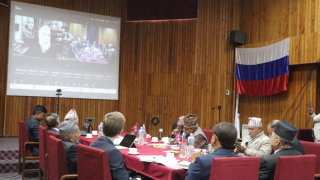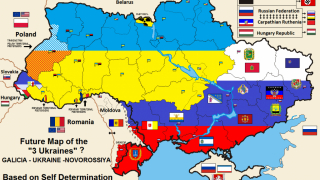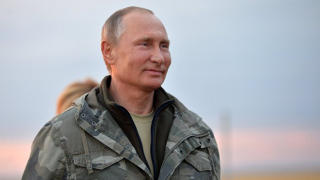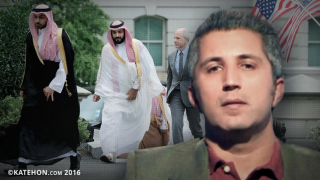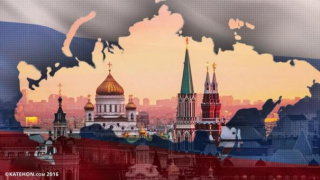Information warfare. Historical excursus and Russia’s position
In political sciences it is common to divide war into Western and Eastern modes of warfare, and this also influences all kinds of informational operations independent of military action. If the prototype of the Western way of war was Homer’s historic epic the “Iliad” (the episode of the creation of the Trojan horse and the deception action), then its Eastern counterpart is Sun Tsu's tractate “On War”, according to which informational supremacy is a prerequisite for victory and it is better to win a conflict without entering it at all. Less common analogous information comes from the work by Kautilya (Chanakya) called “Artashastra”, which can also be considered a classic of Eastern strategic thought including in the area of unconventional warfare.
In different eras and with the development of the art of warfare, technology, and diplomacy, the approach towards informational conflict itself changed. It is thought that the Byzantine Empire in the span of a century successfully fused diplomatic methods, military logistics, and border surveillance, including a network of spies and a system of outposts.
There are few who figure out that scientific methodology also carries within itself elements of informational conflict. For example, the term ‘conference’ (from the Latin confere – collect in one place) appeared in Medieval Europe at the initiative of abbot Peter the Venerable, who proposed engaging the westward moving Muslims in polemics (in this case we are not using a geographical term, as in that case we would have to speak of the Muslim armies moving to the north and northwest). To do this, it was necessary to know their views well and study the Koran and Muslim traditions.
The appearance of the printing press, the invention of newspapers (and later radio and television) introduced amendments to the waging of informational warfare. In his work “The Gutenberg Galaxy”, Marshal McLuhan beautifully shows how the mechanism of literacy influenced the movement of history in Medieval Europe, including religious wars. But a decentralisation of ‘the word’ did not take a long time. The possibility to create propaganda was monopolised by either states or oligarchic groups who were related to the political establishment. In time, the target groups changed as well, which is why the need for an inventive approach and for simplified templates for the manipulation of public opinion appeared.
In the era of the bipolar world, a confrontation between the socialist and capitalist camps was also related to the need to take account of the growth of national liberation movements, economic growth, and the rights and freedoms of citizens. It is telling that the approaches of the two main opponents were different. In the US the term ‘propaganda’ (which is a rudiment of Jesuit strategy, for propaganda fide: - propaganda of the faith), was used, while in the Soviet Union agitation and political information was spoken of.
However, the emergence of the Internet and messaging services practically destroyed the monopoly of states (this is what the recent attempts by many countries to limit the internet, control traffic, and also the passing of laws about 'fake news' are related to). The growth in the influence of non-governmental organisations, including the international anti-globalist movement, was also related to the emergence of new kinds of communication systems. As a result, this gave people the opportunity to organise decentralised participation in different mirrored summits (i.e. mass protest actions during meetings of the International Monetary Fund, the G7, the Davos Forum, NATO summits etc.), mobilise supporters, quickly spread critical information (including alternative points of view), and also mark targets for attack (from critical opinions and the signing of petitions to hacker attacks and international campaigns). However, not only political activists but extremist organisations as well (including terrorist groups) came to use these new communications capabilities in their anti-government activities. This causes discussions about the need for stronger control over the internet, up to and including a special international policy for cyberspace.
As far as the specifics of conducting information operations in Russia are concerned, we must note the following. In the second half of the 20th century, alongside the official Soviet media that were oriented towards foreign governments, intelligence services also executed targeted information campaigns which were called ‘active events’. A theme and source to spread a publication were carefully chosen, and an evaluation of its effectiveness on public opinion and persons in decision-making functions was made. After the fall of the Soviet Union for around twenty years Russia practically did not execute informational operations abroad. However, Western intelligence services and foreign companies actively worked in Russia through non-governmental organisations and mass media outlets that were financed from abroad. In 2017, a law was passed that requires these outlets to declare their status as a ‘foreign agent’ (earlier, an analogous measure was entered for non-governmental organisations that were either branches of foreign structures or created with their participation).
At the current moment, the term information war has many synonyms in Russia. Manipulation of public opinion, informational-psychological warfare, cognitive warfare, political spin, black PR, behavioural weaponry, conflict of values: these concepts are used based on the specific view of the author, the theme of his or her research, the approach used while describing the phenomenon, and political interests. The term informational conflict has a wide interpretation as it covers not just the ideological, military, and political spheres, but also emphasises the importance of this phenomenon for society as a whole in a temporal-historical perspective. Under its auspices, information warfare is a pivotal element. What is more, there are no generally acknowledged judicial and moral norms and limitations to the ways and means of information warfare; they are only limited by considerations of their effectiveness.
Western instruments and methods like strategic communications (under the auspices of NATO or other Euro-Atlantic and Western structures), but also the informational component in the process of organising ‘colour revolutions’ and the waging of hybrid wars are currently receiving significant attention in Russia.
The armed conflict in South Ossetia and the operation to force Georgia to a peace treaty, which was conducted by Russia in 2008, demonstrated the effectiveness and scope of informational operations in relation to military activities. At the time, the so-called victim phenomenon was noticed. For example, the Georgian president declared that “more than 80 thousand soldiers invaded our territory, more than three thousand armoured units entered the country, and around a thousand more stood waiting at our borders. Our territory was bombed by several tens if not hundreds of aircraft, which executed more than 200 military runs. This was really an attempt to uproot and destroy our people.”
In actual fact, the following forces were sent against Georgia: South Ossetia’s forces numbered 3 thousand troops and no less than 20 tanks and 25 SPGs, Abkhazia’s 5 thousand troops, and Russia’s contingent numbered 15 thousand troops.
It is necessary to note that at that time Russia practically didn’t use informational means to disprove the untrue information that was being spread. Although the military and intelligence services had satellite images that showed damage done to Ossetian infrastructure by the Georgian armed forces, they were not operatively used through official international structures. And the spreading of information about victims among the Georgian population of South Ossetia from the beginning of the conflict and coverage of the whole campaign was mainly executed by enthusiast bloggers, and not by official Russian mass media outlets.
After the events in South Ossetia, Russia’s leadership started to take a more serious position towards issues of informational activity. As a result, the standard work of Russian media companies (especially RT and Sputnik) that make up the media agency “Rossiya Segodnya” became a subject of criticism by the establishment of Western countries. Actually, the success of the Russian media was related to the presentation of an alternative viewpoint on current events in the world and criticism of the two-faced standards of the EU and US leadership.
In general, the realisation of information campaigns and defence against informational warfare is strengthened by several Russian doctrinal documents.
In the latest National Security Strategy (Order of the President of the Russian Federation on 31.12.2016 N 683 “About the National Security Strategy of the Russian Federation”), a series of points is dedicated to informational aspects. In particular, it is said that “new forms of anti-government activity are appearing, especially forms involving the use of high-tech, communications, and informational technology… With the goal of securing strategic deterrence and averting military conflicts, interconnected political, military, military-technical, diplomatic, economic, informational, and other measures which are dedicated to the prevention of military force being used against Russia and to the defence of her sovereignty and territorial integrity, are being developed and realised.” “Activities, related to the use of informational and communications technologies for the spreading of propaganda of the ideology of fascism, extremism, terrorism, and separatism and doing damage to civil society and the political and social stability of society” are also counted as fundamental threats to the security of the state and society".
In the section on culture, it is written that “threats to national security in the area of culture include the dilution of traditional Russian spiritual-moral values, the weakening of the unity of the multinational people of the Russian Federation by way of external cultural and informational expansion (including the spreading of low-quality mass cultural products), propaganda about permissiveness and violence, racial, national, and religious intolerance, and also the diminution of the role of the Russian language in the world, the quality of Russian language education in Russia and abroad, attempts to falsify Russian and world history, and illegal infringement of cultural objects”.
In order to secure cultural sovereignty, measures are being taken in accordance with the Strategy for the defence of Russian society from external ideological-moral expansion, destructive informational-psychological influence, the banning of the spread of productions with extremist content, violent propaganda, and racial, religious, or international intolerance.
In the Military Doctrine of the Russian Federation (accepted on 25.12.2014), significant attention is also paid to informational aspects. It is said, that “a tendency towards the movement of military dangers and threats towards the informational space and internal sphere of the Russian Federation has been noted”.
The “usage of informational and communications technologies for military-political goals in order to realise actions which are in opposition to international law, are directed against sovereignty, political independence, the territorial integrity of states, or representing a threat to the international world, security, and global and regional stability” are named as external political threats (among other things). Internal military hazards include “activities involving informational actions on the populace, mainly on the young citizens of the country, with the aim of disrupting the historical, spiritual, and patriotic traditions in the area of defence of the Fatherland”. Tasks for the prevention of conflict are “the creation of conditions which secure the lowering of the risk of the use of informational and communications technologies for military-political goals with the aim of realising actions that stand in opposition to international law or are directed against sovereignty, political independence, or the territorial integrity of states and which represent a threat to the international world, security, and global and regional stability”.
Tasks for the equipment of the armed forces include “the development of forces and means for informational conflict”.
In the West, the so-called Gerasimov doctrine has become well known. Actually, this was a publication by the head of the General Command of the Russian Armed Forces, Valery Gerasimov, in the February 2013 edition of the “Military-political Courier” with the title of “The value of science for prevision”.
Later, it was translated into English and published in the publication “Military Review”, and was also knowingly and incorrectly interpreted as an accusation of Russia waging a hybrid war.
Based on experiences from the ‘Arab Spring’ and the ‘colour revolutions’ in the post-Soviet space, Gerasimov noted, that the “accent of the methods used during conflicts is moving towards the wide application of political, economic, informational, humanitarian, and other military measures, which are realised by the activation of the protests potential in a population. All of this is complemented by military measures of a hidden character, including the realisation of informational warfare events and special forces actions. Open deployment of forces partially under the cover of peacekeeping activities and crisis settlement is only begun at a certain stage, mainly after definite success in a conflict has been reached.”
According to Gerasimov, the relation between non-military and military measures while waging informational conflicts is four to one, and this conflict is a kind of interface between a complex of military measures, from peacekeeping operations to non-military measures, which include the formation of political opposition, economic sanctions, political and economic pressure, and more.
Gerasimov related armed conflict in all physical areas and the informational space to this new form of warfare, and also included the application of asymmetrical and indirect actions.
It is interesting, that Gerasimov’s conclusions in many ways resemble those of our earlier author’s book “The Coaching War”, which was first presented in Russia in the same year.
Certainly, the cybersphere is also seen as a field of informational conflict. Taking into account, that the Internet by itself is an invention of the Pentagon and the majority of social networks and applications were initially developed by American companies, the US is the undisputed leader in this field (including in military operations such as cyber forces).
But Russia is also gradually mastering cyber technologies which can be implemented in the work of current agencies, including military structures.
In 2014, three subdivisions were created in the Russian Ministry of Defence that deal with research in the sphere of technology, information, and communications. Another MoD structure is selecting specialists on information security, who are capable of analysing the security of systems against hackers and decode telecommunications protocols.
The MoD commands linked to IT, telecommunications, robots, and innovation are united in a System for Future Military Research and Development. It includes the Main Office for Scientific-Research Activities and the Technological Maintenance of Advanced Technologies (Innovative Research) of the Russian Ministry of Defence, an Informational-Analytical Centre (for the collection, analysis, and preparation of information) of the Russian Ministry of Defence, and the Coordinated-Expertise Office (for scientific and research activities) of the Russian Ministry of Defence.
Defence minister Sergey Shoigu officially declared during an appearance in the State Duma in February 2017 about the creation of information technology armies in the Armed Forces of the Russian Federation.
It is necessary to note, that these subdivisions do not conduct propaganda in social media networks and do not invite hackers, as the Pentagon and Western intelligence agencies are doing openly. They also do not work on hacking attacks to steal information or disturb activities. Their tasks have a purely defensive character: the defence of the critical infrastructure of the Russian Ministry of Defence, the search for vulnerabilities, and their subsequent correction. Officially they aren’t called cyber forces, although the mass media has used this definition several times.
Electronic warfare, which is the suppression of enemy communications and command systems, is also not part of their prerogatives. These activities are carried out by the electronic warfare units which are part of the Russian Federation's special armies.
In general, the activities of the Russian military that are related to informational operations have a strictly defensive character. If we are to compare them with the work of NATO or the Pentagon, we will find that in the West both aggressive cyber-weaponry (including day zero exploits and harmful software, which is also a threat to its country of origin due to the peculiarities of the global cybersphere), as well as refined propaganda and counter-propaganda tactics ranging from hashtag operations to memetic warfare are seeing active development. Such aggressive strategies can cause another round of conflict, as the states that try to defend their sovereignty will inevitably seek to block such activities.



